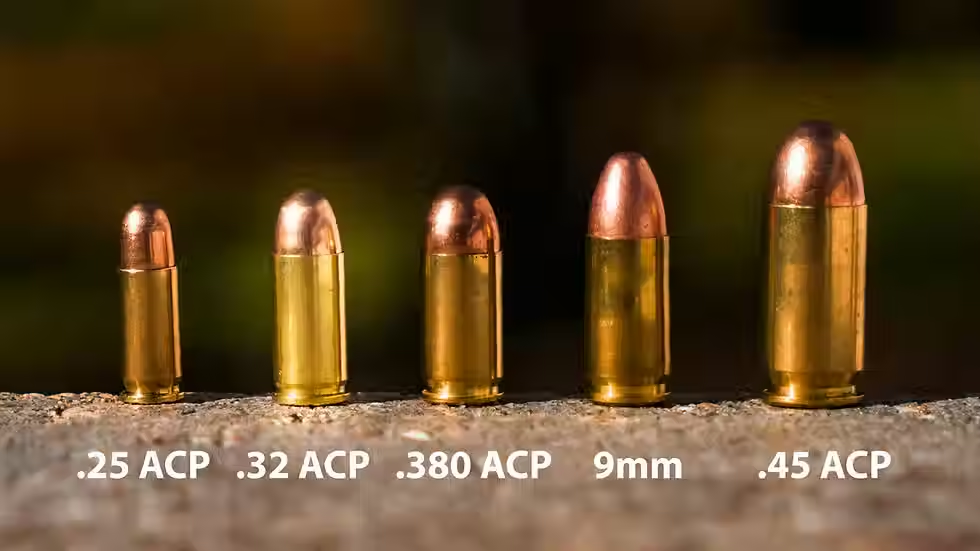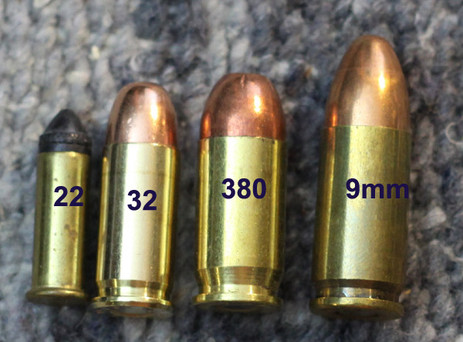.380 ACP for Self-Defense: Is It Better than .32 ACP and 9mm
- Aug 6
- 3 min read
Updated: Aug 11

The .380 ACP (9mm Short) remains a popular self-defense caliber well into 2025, especially among concealed carry users, new shooters, and those seeking a compact, controllable firearm. But how does it really stack up against its neighbors — the smaller .32 ACP (7.65 Browning) and the more powerful 9mm Luger (9x19mm)?
Let’s dig into the ballistics, real-world performance, and practicality of the .380 ACP — and compare it side-by-side with .32 ACP and 9mm.
Quick Overview: What Is .380 ACP?
Developed by John Browning in 1908, the .380 ACP is designed for compact, semi-automatic pistols. It strikes a balance between recoil, concealability, and stopping power — often carried in pistols like the Glock 42, Ruger LCP, and S&W Bodyguard.
Typical .380 ACP Specs:
Bullet Weight: 85–100 grains
Velocity: 900–1,000 fps
Energy: ~271.164 joule
Recoil: Light
Best Use: Concealed carry, backup gun
.380 ACP vs .32 ACP vs 9mm Luger
Feature | .32 ACP | .380 ACP | 9mm Luger |
Bullet Diameter | 0.312 in (7.65mm) | 0.355 in (9mm) | 0.355 in (9mm) |
Bullet Weight | 60–73 grains | 85–100 grains | 115–147 grains |
Velocity | ~900–1,050 fps | ~900–1,000 fps | ~1,150–1,300 fps |
Muzzle Energy | ~176–203 joules | ~258–407 joules | ~475–610+ joules |
Recoil | Very Low | Mild | Moderate to High |
Penetration (JHP) | ~6–9 inches (often lacking) | ~9–13 inches (adequate) | ~12–18 inches (FBI standard) |
Firearm Size | Ultra-compact | Compact to subcompact | Compact to full-size |
Availability | Good (restricted markets) | Excellent | Excellent |
Best Use | Deep concealment, legal-restricted carry | CCW, backup | Primary defense, duty use |
Where .380 ACP Shines
Better Than .32 ACP:.380 ACP offers noticeably more energy and improved terminal ballistics over .32 ACP. It's far more capable of expanding and penetrating consistently with modern hollow-point loads.
More Controllable Than 9mm: Especially in ultra-compact pistols, the .380 generates less recoil than 9mm, allowing for faster follow-up shots and better control — particularly important for newer shooters or those with reduced hand strength.
Slim, Concealable Pistols: Pistols like the Ruger LCP Max or Kahr CW380 are small, reliable, and easily carried in a pocket, holster, or purse — a true advantage for everyday carry.

⚠️ Limitations of .380 ACP
Not as Powerful as 9mm: The 9mm Luger dominates in terminal ballistics. It penetrates deeper, expands more reliably, and performs better through barriers (like heavy clothing, auto glass, etc.).
Barrel Length Sensitive:.380 ACP relies on short barrels, which can affect expansion and velocity. Ammo selection is critical.
Borderline Performance: While much better than .32, some .380 loads still struggle to meet the FBI’s 12-inch penetration guideline, especially if expansion is excessive.
Best Self-Defense Ammo Picks (2025)
For .380 ACP:
Hornady Critical Defense 90gr FTX
Federal Hydra-Shok 99gr JHP
Speer Gold Dot 90gr JHP
Winchester PDX1 Defender
For .32 ACP:
Fiocchi 73gr FMJ (better penetration)
Buffalo Bore +P Hard Cast
Sellier & Bellot 73gr FMJ
For 9mm Luger:
Speer Gold Dot 124gr +P
Federal HST 147gr
Hornady Critical Duty 135gr FlexLock
Pro Tip: If you're using .32 ACP, consider FMJ over hollow point for deeper penetration. With .380 or 9mm, stick to modern, bonded JHP(Jacketed Hollow Point) rounds.
Final Verdict: Which Caliber Should You Carry?
.32 ACP: Use only if restricted by law or physical ability. It’s underpowered for modern self-defense but better than being unarmed.
.380 ACP: A practical choice for concealed carry — manageable recoil, good terminal performance (with the right ammo), and excellent concealability.

P.S. In India, 9mm Luger is classified as a prohibited bore (PB) caliber and is generally not permitted for civilian ownership. Civilian users typically rely on .32 ACP or .380 ACP (non-PB) firearms where available and licensed.











Comments